Many health-conscious men and women banished bread from their pantries long ago because it’s high on the glycemic index scale. Its sugars are quickly broken down and surged into the blood stream, spiking blood sugar levels and increasing your odds for obesity and diabetes. But that's largely because of old-school white bread. If you haven't noticed, whole grains are in and the healthiest bread can largely benefit a well-balanced diet.
Greater whole grain consumption is associated with a lower risk of heart disease in middle- to older-aged adults. A large observational study analyzed data from 3,121 participants in NHLBI’s Framingham Heart Study Offspring Cohort. Researches found men and women who ate at least three servings of whole grains daily had smaller increases in waist size, blood pressure, and blood sugar levels over time compared to those who ate less than half a serving of whole grains per day.
Likewise, research from Harvard T.H. Chan School of Public Health found people who ate 70g (about four servings) of whole grains per day, compared with those who ate little or no whole grains, had a 22 percent lower risk of premature death, a 23 percent lower risk of death from heart disease, and a 20 percent lower risk of death from cancer.
Related: 100 Healthiest Foods With the Highest Protein
The truth is, most people can tolerate grains/gluten—and research backs it up. Figures published in Clinical Gastroenterology and Hepatology reveal only about 1.4 percent of the global population is afflicted with the autoimmune disorder in which the ingestion of gluten can damage the small intestine. It's possible you’re sensitive to grains, however. Check with your doctor or nutritionist to be sure. If you get the green light, prioritize the healthiest bread to eat or consider gluten-free.
Is Bread Good or Bad for You?
The primary nutrient in bread is carbohydrates. Carbs provide the body with fuel for activity and everyday body functions. Your brain also exclusively uses carbs (glucose) for fuel.
As with most nutrition questions, the answer whether bread is good or bad for you is complex: It depends. There are many types of bread from highly processed, packaged white bread to whole grain and nutrient-dense varieties (aka the healthiest bread to eat).
The bottom line is, bread is not bad for you and is among the healthiest foods to consume, especially for athletes who need carbs for performance. It all depends on the type of bread, quality of ingredients used to make it, and how much you're consuming.
What Breads to Avoid, if Any? White Bread vs Wheat Bread
You need to be a savvy shopper. Just like there are low-quality protein bars, snack bars, salad dressings, and cereal, there are plenty of suboptimal bread options.
Highly processed, pre-sliced white bread is a simple carb—meaning it’s quick and easy to digest but has little nutritional value, similar to fast food. Foods made from highly processed grains (read: white bread) can cause blood sugar to spike soon after eating.
Frequent blood sugar spikes can eventually contribute to the development of type-2 diabetes over time. Another downside is that processed carbs, like white bread, lack fiber. As a result, a person will not feel full after eating them. When bread companies make processed bread, it often results in the loss of nutrients. They often add vitamins and minerals to white bread to replace these missing nutrients.
Related: Healthier Sodas and Sparkling Beverages to Sip On
However, they can't replace fiber, which is essential for digestive and cardiovascular health. A high intake of simple carbs, such as white bread, can lead to weight gain and a higher risk for diabetes and other lifestyle-related chronic conditions. On the flipside, you'll find more fiber, vitamins, minerals, and other health-promoting nutrients in the best bread varieties, like whole grain.
Note that we said whole “grain,” not whole “wheat.” Whole grain is the best bread option. It offers the most fiber but also more vitamins, iron, and other health-promoting antioxidants than other types of bread.
How Often Should You Eat Bread?
Bread is a staple food all over the world, and has been for thousands of years. Nowadays, bread and carbs are unfairly demonized. But bread is a nutritional mainstay (especially as a quick, healthy store-bought breakfast) for a reason.
Like rolled and steel-cut oats, healthy bread is convenient, cheap, and has important nutrients like iron, B-vitamins, thiamine, niacin, folic acid, and riboflavin. Diet is all about balance and moderation, so unless you're on a specific doctor-recommended plan to cut carbs for a medical condition, there's no reason to deprive yourself of bread. Just enjoy it in moderation as part of a balanced diet.
Are Wraps Healthier Than Bread?
Most people might think wraps are healthier or lower in carbs because the bread is flat and unleavened. But in terms of carbs, one wrap is generally the same as two slices of bread. For example, a single flatbread is about the same as eating four slices of white bread in terms of carbohydrate intake. Some wraps can be just as bad as white bread, in terms of nutrient quality. But if you do choose a wrap over a whole grain bread option, opt for low-carb wraps that are whole grain and low in sodium.
Related: Best High-Protein Snacks to Eat Anytime, Anywhere
If you're on a specific diet, like keto, there are even some low-carb healthy bread options. We've seen a rise in the number of available brands just as low-carb pastas and low-carb pizzas have exploded in popularity.
How to Choose a Healthy Bread
- Always opt for whole grain. Look for labels that say "100 percent whole grain."
- The fewer the ingredients, the better. Look for the absence of artificial flavors, colors, and preservatives to identify a healthy bread.
- Make sure there's fiber: Look at the nutrition fact label and aim for at least 3 grams per slice.
One-hundred percent whole grain is typically regarded as the best, but other types have their benefits, too. We've rounded up the healthiest breads to make your trip to the grocery store quicker and easier.
This article has been vetted by Jordan Mazur, MS, RD, director of nutrition for the San Francisco 49ers.
Best Bread: 11 Healthy Bread Options to Eat
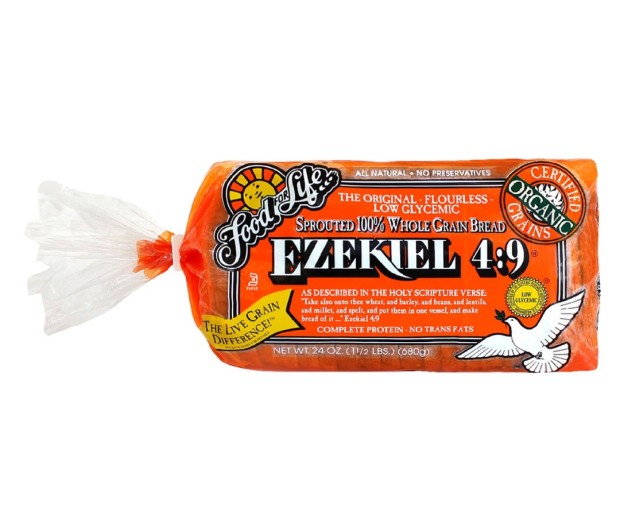
Courtesy Image
Ezekiel bread stands out among most varieties because it's made without added sugar and from sprouted whole grains. The sprouting process increases the amount and bio-availability of vitamins, like vitamin C, and minerals, like folate and lysine, so Ezekiel bread is a bonafide nutritional powerhouse. Quick lesson on sprouting grains: Companies can do it one of two ways—dry or wet.
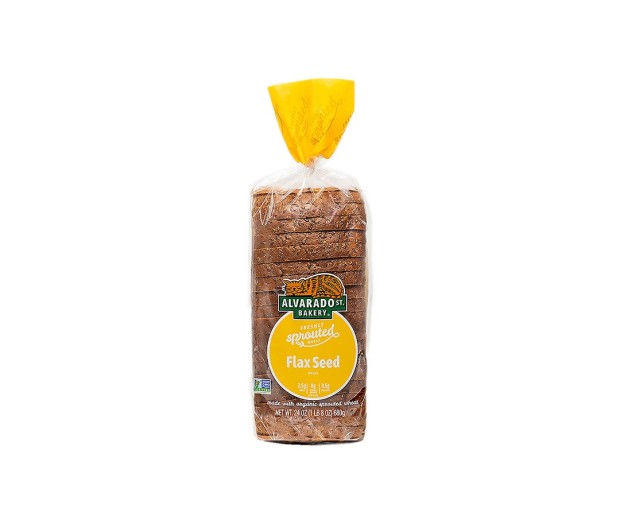
Courtesy Image
For heart-healthy omega-3 fatty acids, fish oil and oily fish are typically the best supplement and animal source, respectively. But for vegans, that's not an option (i.e. animal byproducts are a no-go). Flax seeds, however, are. So it's a no-brainer flaxseed bread is a great alternative to your regular loaf. Research shows flax seed and flaxbread can reduce your risk of heart disease, cancer, stroke, and diabetes to boot.
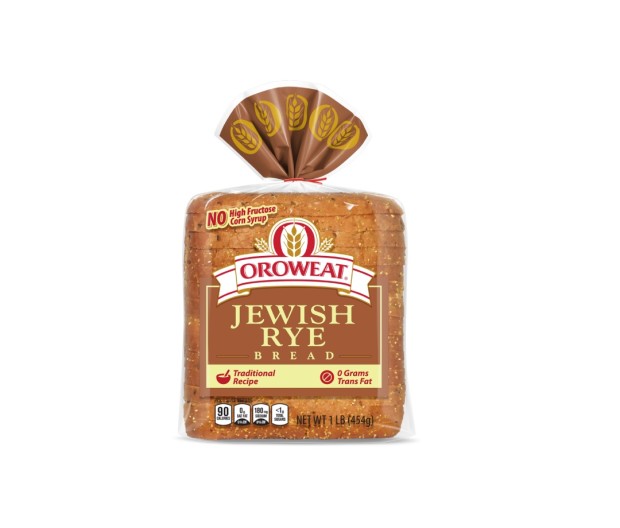
Courtesy Image
In a study conducted at Lund University in Sweden, mice were fed whole grain diets based on either wheat or rye for 22 weeks. Whole grain rye reduced bodyweight, slightly improved insulin sensitivity, and lowered total cholesterol in the mice. Further research, published in Nutrition Journal, found people who ate rye bread (with three varying levels of rye bran—the highest amount of bran) for breakfast experienced decreased hunger and desire to eat eight hours later, compared to people who ate wheat bread. Rye bread is made with rye flour, which comes from a wheat-like plant.
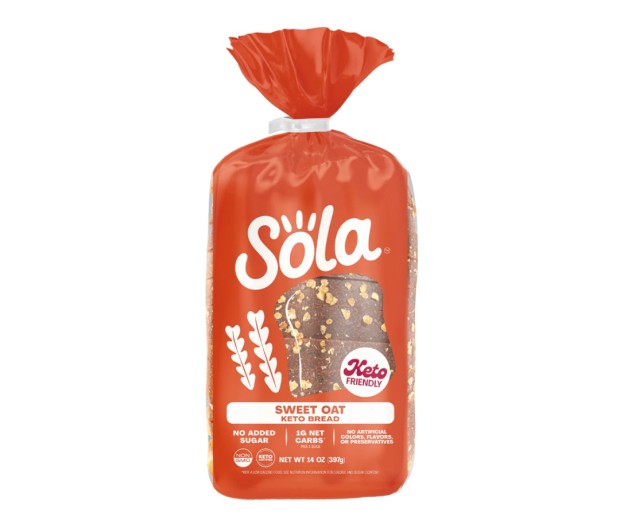
Courtesy Image
Oats have always been touted as one of the healthiest source of good carbs. They're slow-digesting and make you feel fuller longer. It's thanks to their high source of cholesterol-lowering fiber called beta-glucan, which has also been shown to reduce certain cancers, like colon cancer, diabetes, digestive problems, and heart disease. Oats are also richer in protein than wheat (about twice the amount), which is obviously beneficial if you're trying to build and repair muscles; they have a bevy of vitamins, like vitamin E, and nutrients, like iron and calcium. Oat bread may contain whole grain oat groats, steel-cut oats, and thick oats.
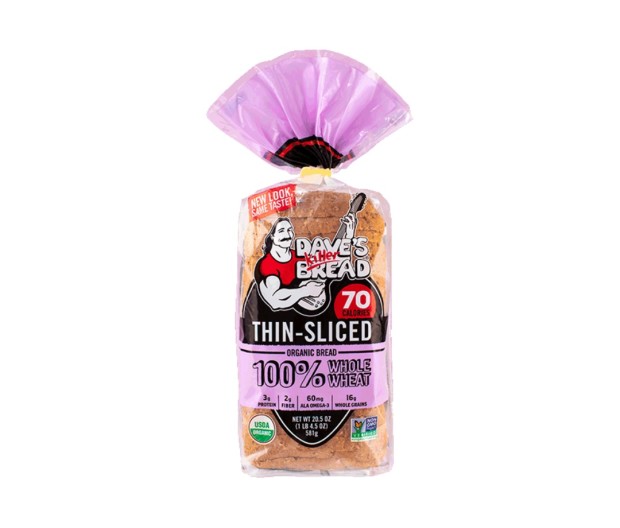
Since 1941, the U.S. has required manufacturers to enrich wheat flour with vitamins B1, B2, B3, and iron because processing takes about 60 percent of the nutrients out, according to The University of Chicago Press. But even then, the same value of B vitamins and iron that's taken out isn't put back in, which is why you want to choose 100% whole wheat bread. Whole wheat (in its original, non-enriched form) is a very good source of dietary fiber, manganese, and magnesium. Just know for something to be whole wheat, the product has to be made from the entire wheat kernel. (Whole grain means the bread can be made of any whole-grain kernel, like spelt, oats, or barley.) "Whole wheat is one kind of whole grain, so all whole wheat is whole grain, but not all whole grain is whole wheat," says the Whole Grains Council.
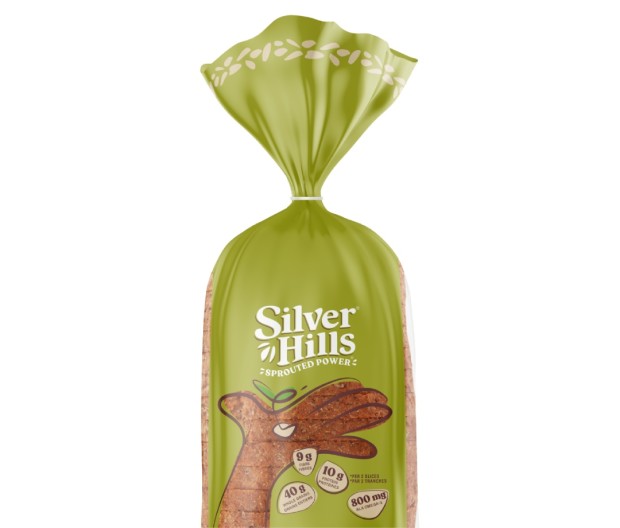
Courtesy Image
Whole grain foods are a healthy choice because they contain a bounty of nutrients, fiber, and healthy plant compounds naturally found in the grain, according to the Mayo Clinic. Look for products that list the first ingredient as "whole wheat," "whole oats," or a similar whole grain. And to clarify, whole grains can mean it has one of many types of healthy grains included in the product, while whole wheat labels the specific grain that's being used.
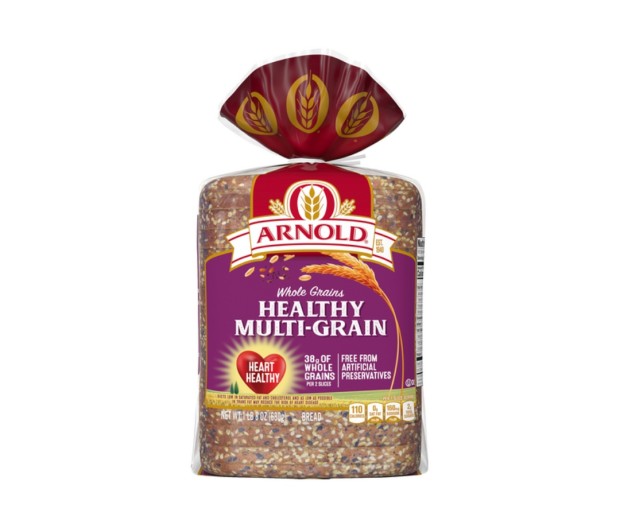
Courtesy Image
Just like whole wheat and whole grain are different, so too are multigrain and whole grain breads. Whole grain means all parts of the grain kernel—the bran, germ, and endosperm—are used to make the bread or product. Multigrain—like seven- or 12-grain bread—means a food has more than one type of grain, although they might not all be whole grains, according to the Mayo Clinic. You want to choose multigrain bread with whole grains.
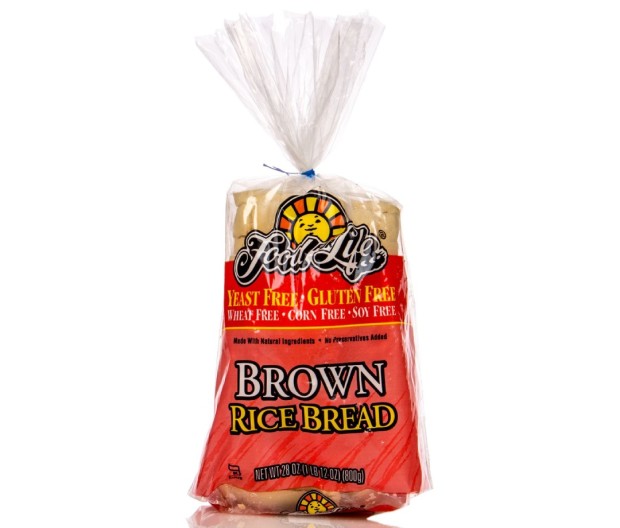
Courtesy Image
Brown rice bread is a good option for men and women who are vegan and gluten-free because you still get the benefits of fiber, proteins, thiamine, calcium, magnesium, fiber, and potassium natural to the rice.
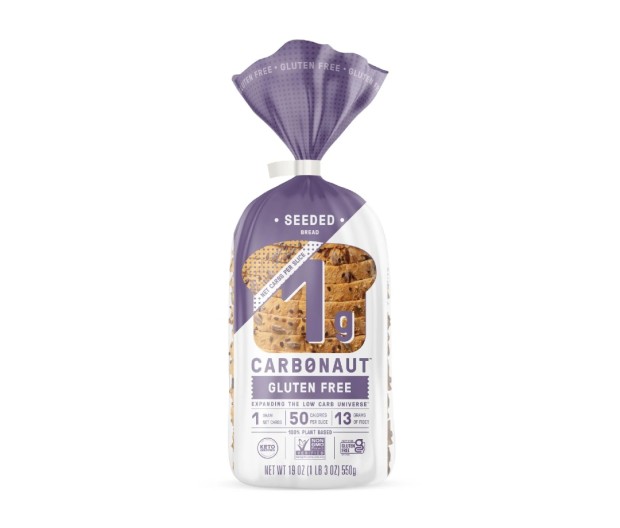
Courtesy Image
Gluten-free bread is void of wheat, rye, and barley. Four other starches are used in their place—cornstarch, rice flour, tapioca starch, and potato flour. We like Glutino Seeded Bread. It's made with modified tapioca, corn, and potato starch, and is heartier than its other gluten-free counterparts. This is obviously the go-to for men and women with Celiac disease or those with gluten allergies. But if you don't have either, don't buy it. A gluten-free diet consists of stripped foods, meaning you're eating products void of a lot of nutrients. Plus, on average, gluten-free products are 242 percent more expensive than regular products, according to research from the Canadian Journal of Dietetic Practice and Research.
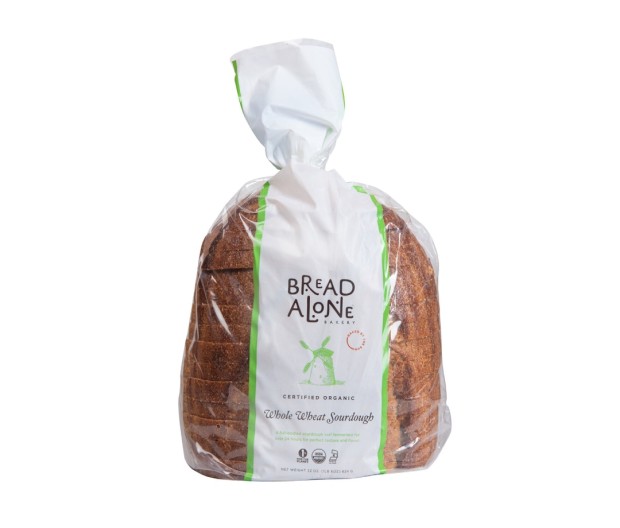
Courtesy Image
It's more labor-intensive to make sourdough bread. There's a longer rise time, and that increases the lactic acid and creates an ideal pH for the enzyme phytase. This enzyme breaks down phytates—which bind to minerals, like iron, zinc, and manganese, slowing their absorption) more effectively than other breads. Also, the long fermentation process allows the bacteria to break down the carbs and gluten in the bread, making it easier for you to digest and releasing the nutrients so they're easier to absorb, according to the Mayo Clinic.
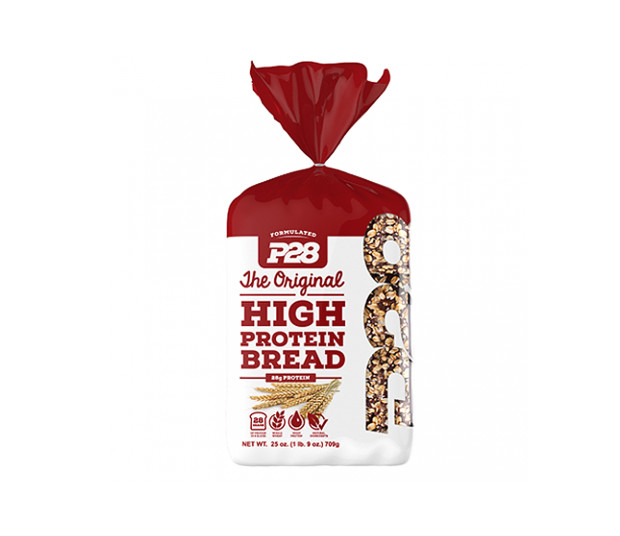
If you're an active guy who plays sports, is trying to gain muscle mass, or trying to lose weight, protein bread could be a great supplement to your diet. (It's also great for diabetics and bariatric patients, vegetarians looking for better sources of protein, and children who need essential amino acids that promote growth.) We like P28 High Protein Bread. It's made with whey protein isolate, which has been stripped of lactose, fat, and carbs; it's also the fastest-absorbing protein available. What's more, the bread is 100% whole wheat and also made with oats, flax seed, sunflower seeds, and sillet to provide your body with a rich source of eight essential amino acids. Two slices of bread gives you 28g(!) of protein.
from Men's Journal https://ift.tt/4lMDL09
No comments:
Post a Comment